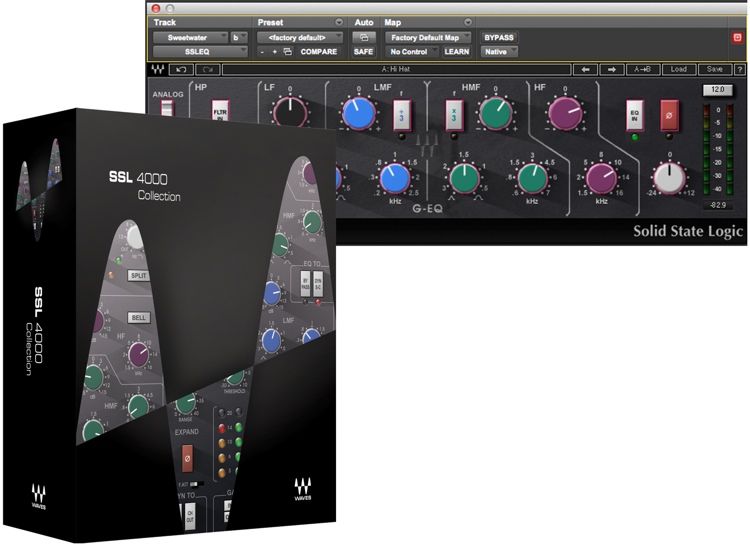
The B offers seven on each of its four bands. But half the fun of these is the limited operation – boost and cut are in 2dB steps (offering +/-12dB) and the A offers just 5 frequencies on each of its three bands, whose bandwidths are non-adjustable. The 550B is a similar unit which features an extra band and more frequency settings which overlap across the bands, although it lacks the A’s band pass Filter. The shelving and filter buttons are augmented with extra indicators. It is less ‘butch’ than vintage Neve, and the Waves version seems very similar. The character of these is smooth, simple and musical – it’s the kind of EQ which is difficult to get wrong, with gentle peaks and shelves with “proportional Q” at useful fixed frequencies. I loved using originals on the c.1977 API console at RAK studios. The 550A three-band EQ is based on a 1960s design, the hardware version of which was reissued in 2004. With EQ applied, Analog On can sometimes add a certain extra low-mid poke, but this is all rather subtle, and no difference was detected with the EQ set flat. The three EQ plugins include vintage-style metering at the top, these have a range of 30dB up to 0dBFS, but have been designed to look like VUs, with a Clip ‘LED’, and there is an extra panel with +/-18dB gain on a knob, Peak level readout, Polarity switching, and an Analog On/Off switch, which theoretically defeats emulation of (one assumes) analogue distortion, and a small amount of hiss in the case of the EQs. All controls have a pop-up value display when adjusted. The dual-concentric knobs are beautifully modelled, with clever implementation of controls using up/down and left/right mouse control for the different knobs, with helpful little arrow indicators appearing as you hover over them. But it is welcome, things are easier to see and manipulate, and it makes sense when LCD screens get ever larger and cheaper.ĭialling up the EQ plugins, one is confronted with a huge screenfull – these are lovely authentic graphic recreations, with a few helpful modifications. This seems rather incongruous with the rather diminutive hardware API equivalents. Opening any of them, one is initially surprised by the enormity of the window size – this seems to be current policy with Waves, as other recent releases boast similarly large graphics.
#WAVES SSL 4000 PLUGIN REVIEW PRO#
The plugs support TDM, RTAS, AudioSuite, MAS, VST, DirectX and AU formats, and in Pro Tools show up in all the expected places. Furthermore, the reselling procedure seems rather complex. There is also the matter of WUP for purchasers, meaning that an already expensive purchase gradually becomes more so. I have yet to have this complete smoothly for any demos, and this was no exception. Waves’ tedious installation and authorization process is more complex than most companies’. Oddly, the simpler 525 compressor is absent. The collection comprises three vintage EQ channels and the more recent 2500 buss compressor. API developed their 2520 op-amp in the late 1960s, and several original module designs are still available.

Waves now provide emulations of arguably the three most respected players in the analogue console world, with the official SSL 4000 Collection and the unofficial Neve-based V-Series. URS had an unofficial attempt at modelling some of the API hardware, but this is an officially sanctioned release. With the proliferation of SSL and Neve emulations that have appeared over the last couple of years, it is perhaps inevitable that there would be an officially licensed set of plugins based on these well-loved API (Automated Processes Inc.) analogue processors.


 0 kommentar(er)
0 kommentar(er)
